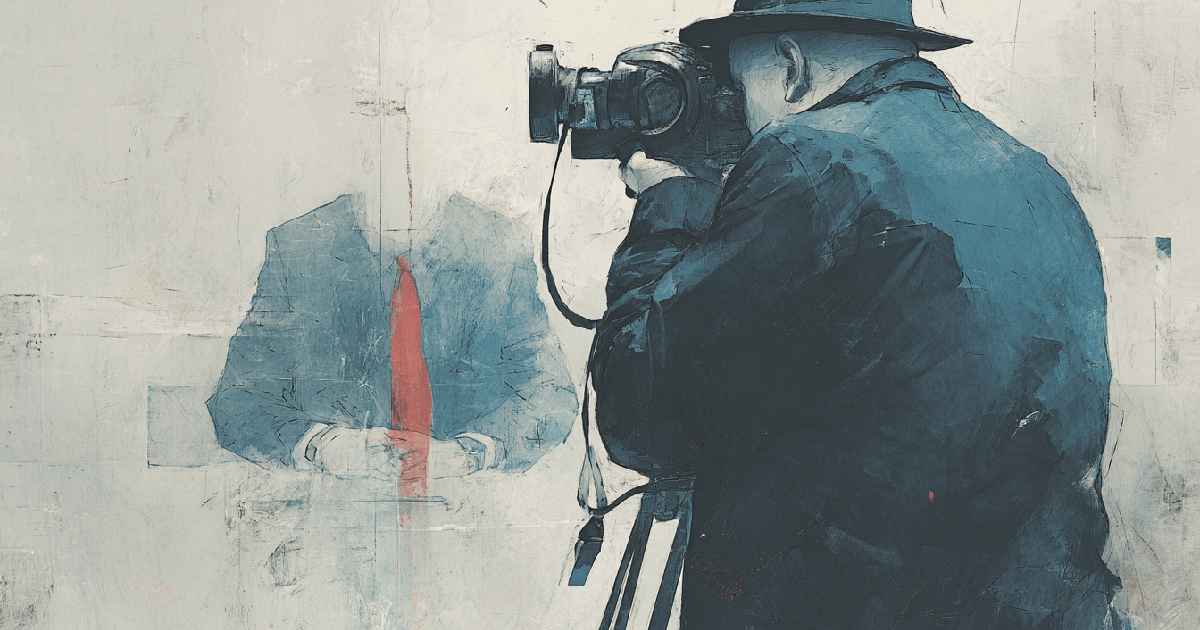What is Subrosa Surveillance?

Subrosa surveillance refers to covert surveillance conducted by insurance companies, defense attorneys, or private investigators to observe and document a plaintiff’s activities during a personal injury claim. The goal is to gather evidence that may contradict the plaintiff’s alleged injuries or limitations.
“Subrosa” is Latin for “under the rose,” meaning in secret—and this type of surveillance is often critical in defending against injury claims suspected of exaggeration or fraud.
Why is subrosa surveillance used in personal injury cases?
Subrosa surveillance is used to test the credibility of a plaintiff’s injury claims. If an injured person claims they cannot work, walk, lift objects, or engage in certain activities, subrosa footage can show whether their real-world behavior matches those claims.
Insurance companies may order surveillance when they believe:
The plaintiff’s injuries are exaggerated.
The damages claimed are unusually high.
There are inconsistencies in medical records or deposition testimony.
Captures daily activities of the plaintiff in public spaces.
May reveal discrepancies between claimed and observed behaviors.
Used to challenge credibility in negotiations or at trial.
Often initiated after medical evaluations or deposition testimony.
What types of activities are monitored during subrosa surveillance?
Investigators hired for subrosa surveillance typically monitor and record public activities—things a person does outside their home that are visible to the public. Private spaces, like the inside of a home, are generally off-limits without consent.
Common activities targeted include:
Walking, running, or exercising despite claims of immobility.
Carrying groceries, lifting heavy objects, or doing yard work.
Attending social events, sports games, or vacations.
Performing physical work tasks despite claims of disability.
Focuses on inconsistencies between injury claims and real behavior.
Video or photo evidence is captured discreetly in public areas.
Surveillance can last for days or even weeks.
Reports and footage may be used in depositions and court.
Is subrosa surveillance legal?
Yes, subrosa surveillance is legal—as long as it is conducted ethically and within legal boundaries. Investigators cannot trespass, harass, enter private property without permission, or engage in unlawful recording. Activities observed in public spaces, however, are generally fair game.
If improperly conducted, illegally obtained surveillance evidence may be excluded from trial.
Public activities can be legally recorded.
Private property is protected by privacy laws.
Illegally obtained evidence may be inadmissible.
Ethical surveillance respects legal and constitutional rights.
How can plaintiffs protect themselves from subrosa surveillance?
Plaintiffs can protect their claims by being truthful and consistent about their injuries and limitations at all times. Surveillance is not intended to “trap” an honest plaintiff—it targets inconsistencies.
Best practices include:
Accurately describe injuries and limitations in medical reports and testimony.
Follow doctors’ restrictions in daily life.
Avoid exaggerating symptoms during litigation.
Assume that activities in public spaces may be observed.
Being honest from the start ensures that even if surveillance occurs, it won’t harm the case.
Consistency between claims and conduct protects credibility.
Medical compliance strengthens injury claims.
Exaggeration can backfire if exposed through surveillance.
Act as if you are always being watched in public settings.
Conclusion
Subrosa surveillance is a common defense tactic in personal injury cases, designed to detect exaggeration or misrepresentation of injuries. By observing plaintiffs in public, insurers and defense attorneys gather evidence that can make or break a case. For injured parties, the best protection is to be truthful, consistent, and mindful that activities in public spaces are never truly private during litigation.
What is subrosa surveillance in a personal injury case?
Subrosa surveillance is covert observation and recording of a plaintiff’s public activities to verify or challenge their injury claims during a personal injury lawsuit.
Is subrosa surveillance legal?
Yes, as long as it’s conducted in public places and investigators do not trespass, harass, or violate privacy rights.
Can subrosa footage be used in court?
Yes. Legally obtained subrosa surveillance can be introduced as evidence to challenge the plaintiff’s credibility or demonstrate inconsistencies in their claims.
How can I avoid problems with subrosa surveillance?
By being honest about your injuries, following medical advice, and acting consistently with your stated limitations at all times—especially in public.
Featured Articles
-
Glossary
What is Doctrine of Avoidable Consequences?
What is Doctrine of Avoidable Consequences? What is the doctrine of avoidable consequences in personal injury law?The doctrine of avoidable consequences is a legal.
-
Glossary
What is Independent Medical Examination?
What is Independent Medical Examination? What is an independent medical examination in personal injury law?An independent medical examination (IME) is a medical evaluation requested by.
-
Glossary
What is Collateral Estoppel?
What is Res Judicata? What is collateral estoppel in personal injury law?Collateral estoppel, also known as “issue preclusion,” is a legal rule that prevents.
Explore our Contributors
Discover Next
Insights from Experts
Learn from industry experts about key cases, the business of law, and more insights that shape the future of trial law.







